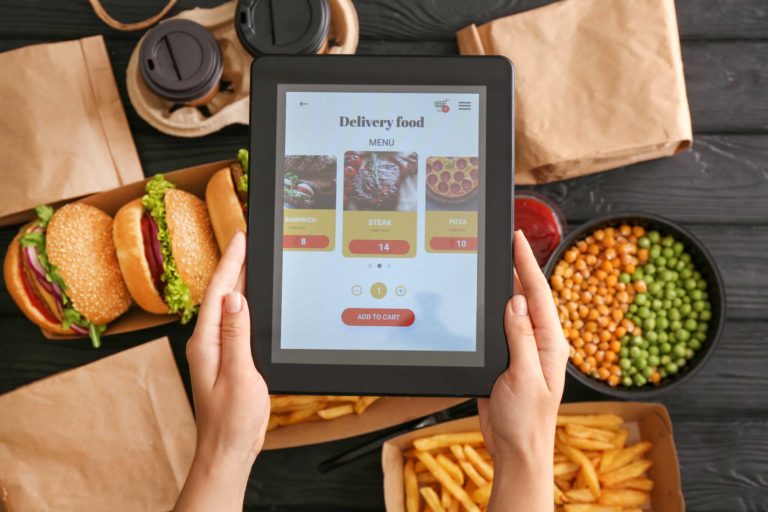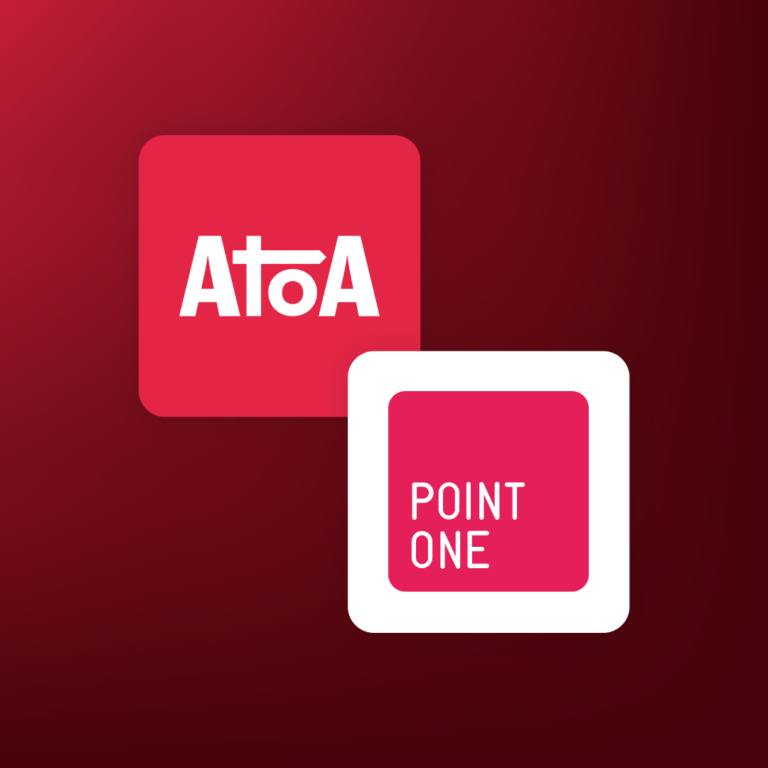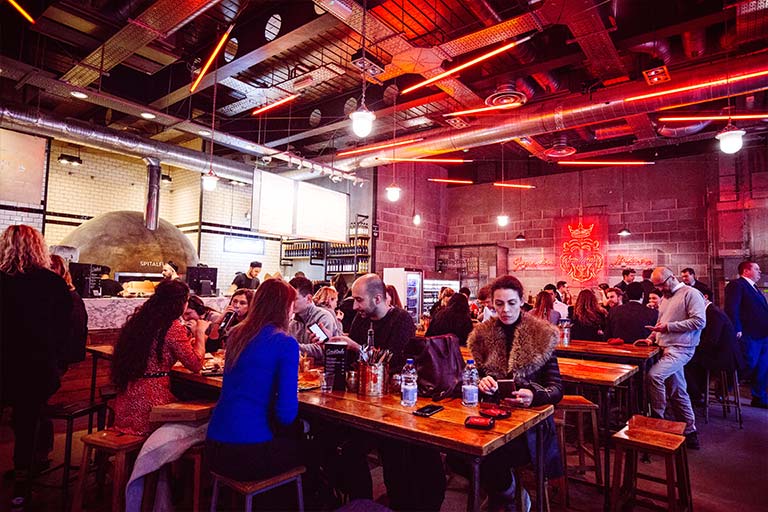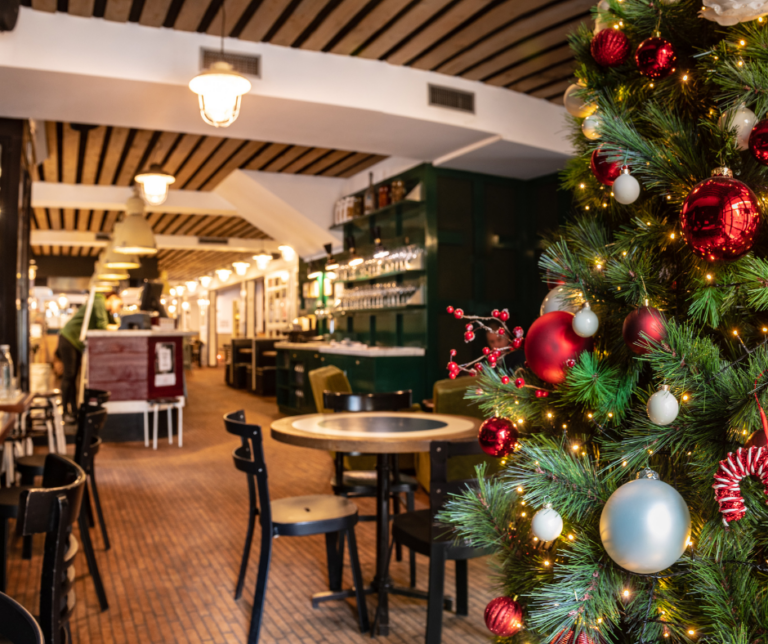Introduction
For restaurants who have had to shut their dine-in operation to observe social distancing measures laid out recently by government, this means increasing their takeaway and delivery services or for many, offering this for the first time. Thankfully for those who have not offered a takeaway service before, UK government have waived any planning permission requirements for this as part of the coronavirus response, giving restaurants the green light to offer takeaway with immediate effect. So as a business having to pivot to 100% takeaway, how can this be achieved quickly and effectively? Here is a list of the 10 key considerations to making this happen, and fast:
1. Protecting your staff
Protecting your staff and customers from contracting or spreading COVID-19 is key. So, ensure that your kitchens are deep cleaned before resuming food production for takeaway.
Ensure that no staff member comes into work with any of the COVID-19 symptoms i.e. dry continuous cough or temperature and if they develop while at work that they are immediately sent home.
Ask that those directly preparing food to wear masks and gloves where possible, and disinfect surfaces and clean cooking equipment regularly. Those working FOH to hand over deliveries should also wash their hands regularly and avoid touching their faces.
2. Protecting your customers
Follow all increased and latest hygiene measures during the pandemic as outlined by the Foods Standards Agency and make sure you inform customers that you are following best practice and ask that they reciprocate by washing their hands before picking up takeaway or accepting your deliveries.
3. Additional tech support
Does your current EPoS allow you to process takeaway orders quickly and accurately i.e. have a dedicated takeaway order screen where orders can be taken and go straight through to the kitchen printer or KMS along with all customer details ready for collection or delivery? For many EPoS providers this is a standard feature of the core EPoS system but may just need to be activated.
For those that wish to offer online ordering in addition to taking orders over the phone or on premise, there are two options:
The first is to procure the services of a third-party delivery service such as Deliveroo, UberEATS or Just Eat. These services will handle all your online menu and ordering via their website and send all orders to you via an on-premise tablet. Their third-parties software integrates with most EPoS providers so that all orders coming in can link directly to your kitchen printers/KMS for fulfilment.
Third-party aggregators will charge you a sign-up fee and commission on all orders for these services, but as of writing Just Eat have waived all sign-up fees for new restaurants joining the platform between 20 March and 19 April in addition to offering independent restaurants a 33% rebate on all commissions for the next 30 days. Others may well follow suit to help struggling restaurants through the pandemic.
A second option that some EPoS suppliers offer is an Online Ordering bolt-on module to the core EPoS. This allows complete automation of the process from customer order and payment right through to fulfilment and delivery/collection. This usually also involves a set-up fee and ongoing monthly charge but unlike the third-party option, it allows you to save the customer details on all orders to your CRM for future marketing purposes*.
Being able to reach your customers with future offers and promotions is key to customer loyalty and no more so when people will be self-isolating and reliant on delivery services. Third-parties retain all customer data and so your relationship with your customers will end after each delivery which is something to bear in mind.
4. Re-distribution of staffing
Clearly changing to a takeaway only service will diminish your FOH requirement with no dine-in customers to serve. Where possible re-distribute FOH to BOH to support the (hopefully) increased food preparation requirement or if you are offering delivery, can some of your FOH move into these courier roles in the short term? If you are not planning to use online food delivery aggregators then you will need to handle delivery yourself so this is often a good solution to safeguard your staff’s employment.
5. Menu revision
Expect to be flexible with your menu as no one knows how some of your supply chain will be affected and this could mean shortages on some ingredients.
If you decide to offer delivery, many of your dine-in options will not work in takeaway form and so you will undoubtably need to offer a different takeaway menu limited to options that can travel and heat up sufficiently.
Think about how people, particularly those self-isolating will be using restaurant delivery services and re-jig your offering to cater to these changing needs i.e. families may want combo meals that can easily be shared whereas the elderly may want three meals a day much like the meals-on-wheels service.
You will also need to remain vigilant on food allergies and think through packaging to avoid cross contamination. A robust EPoS with the option to record allergy information from order point right through to fulfilment and delivery will be a must in managing this.
6. Food delivery packaging
This consideration goes hand in hand with menu revision. Choosing the right packaging that ensures safety during transportation, keeps the right temperature of the food and doesn’t leak etc is crucial. It’s a good idea to include a card about safety and reheating instructions to safeguard against any food poisoning or cross-contamination.
With all the coverage around allergens and ‘Natasha’s Law’ coming into force in October 2021, it’s good practice to include allergen information on your dishes either on your website or as a leaflet within the order.
7. Be realistic with delivery times
You know that you need to allow sufficient time from taking the order to cook and deliver the food but be realistic, particularly if you are completely new to offering this service.
You will not get customer complaints if you manage their expectation. Over-promising on time and under-delivering on taste, quality and standard of food are a recipe for bad reviews and loss of custom.
Test how long your delivery menu takes to prep and add on realistic times for delivery and then add on contingency time and you should have it covered. If using a third-party delivery company, the delivery side of it is handled but if you are fulfilling this in-house then be prepared for additional enquires from customers if food has not arrived within the quoted estimate.
8. Go cashless
Although there has been no direct instruction from the World Health Organisation or otherwise to avoid touching money in case it can spread the coronavirus, it has advised people wash their hands after handling money, especially if handling or eating food. Therefore, many restaurants in the UK have already shifted to cashless to safeguard their staff and customers. It is a good idea to offer this service for your customers as many will prefer it and also, if handling delivery, to offer contactless delivery too. Couriers can leave the order at the door and remain two metres away as per social distancing guidelines.
9. Seize opportunity to increase your customer base & order value
Spread the word and cut through the noise
Use all your social media channels and store-front advertising space to shout about your new or increased takeaway service. Continue to utilise your social to get the message out there and try and cut through the noise with something different. Can you offer self-isolation survival packs full of must-need treats that only your restaurant can rustle up?
Beef up your loyalty scheme
Use your CRM to reach out to existing customers with enticing offers to try your takeaway service. If you don’t already use a dedicated loyalty scheme, now is the time to start one. Third-party loyalty apps like Como or YoYo can all integrate seamlessly with your EPoS and offer personalised, real-time loyalty offers to your customers based on their previous dine-in orders. So, if you know that regular diner Joe Bloggs loves your signature dish then offer them a 50% on their first takeaway order of this dish and so on with new and relevant offers to keep Joe coming back. Give him some additional discounts for referring a friend and so your takeaway customer base will grow.
Gift vouchers
Another way to both grow your customer base, help with cashflow and ensure bums back on seats when the outbreak ends is to encourage your customers to give gift vouchers for the restaurant to friends and family for redemption either through takeaway now or for dine-in in the future. At the time of writing the gift card and experience platform Toggle are offering the industry free use of its platform to do just this.
Traditional marketing
Putting flyers in your takeaway orders advertising your loyalty scheme is still valid in these digital days, particularly for the over 70s who comprise the majority of self-isolators.
10. Lastly, don’t forget to do your bit
We all know that the coronavirus is a grave threat and one that heroes such as those working on the NHS front line are working tirelessly to reduce. Do your bit where possible to help these and others like them fight the fight such as offering discounts or even freebies to lessen their load and help them stay strong for others in need.
*We at pointOne are trying to do our bit to help operators by activating takeaway features on the EPoS and offering 3 months free use of our Online Ordering tool for customers who currently use our Head Office Management and support services.
There will be no sign-up fee or contract for this service and we would aim to have you up and running and ready to take online and takeaway orders ASAP.
Just get in touch with us on our usual number 0345 862 0005 or email [email protected] to get this set up.




